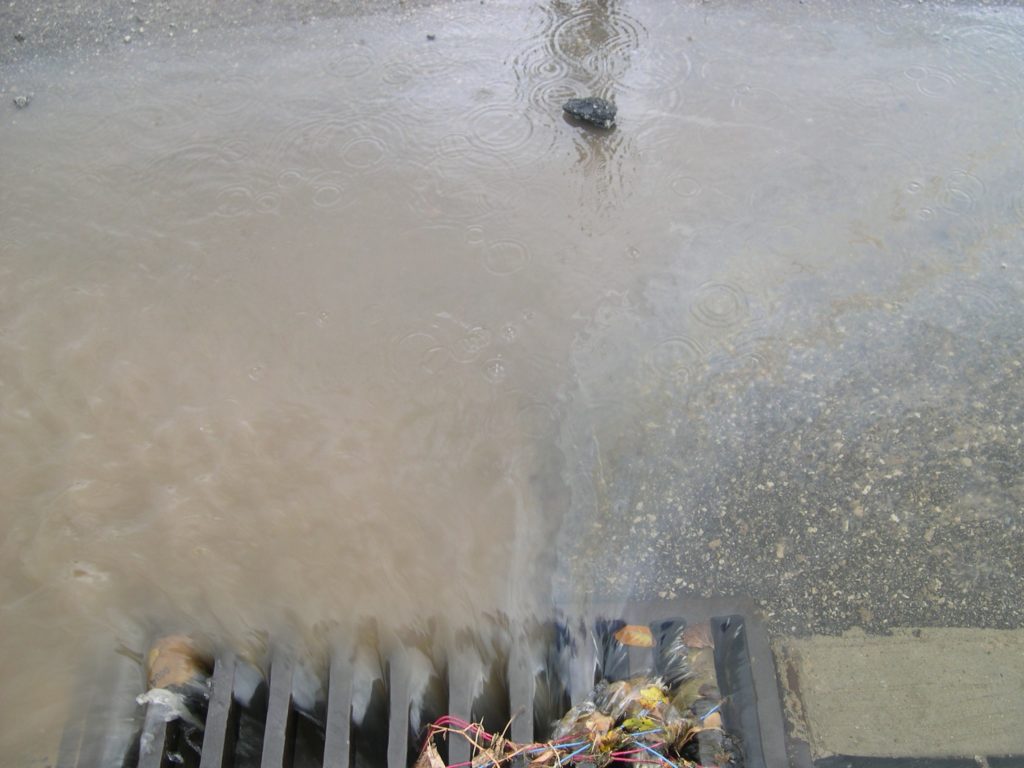Water Quality
As stormwater moves across impervious surfaces it collects pollutants that can degrade water quality. Some of those include: bacteria from animal wastes, nutrients such as nitrogen and phosphorus from fertilizers, heavy metals, and litter. Traditional design of stormwater systems does not capture or treat these pollutants.
The “First Flush”
The early part of a rainfall event creates an initial surge of stormwater to the storm sewer system. Pollutants from the landscape trasnfer to the storm sewer during this time. This is known as the First Flush. Impervious surfaces includes rooftops, compacted lawns and landscapes, sidewalks, streets and parking lots.
The majority or about 90% of rainfall events in Iowa generate 1.25 inches of rainfall or less.

The goal of effective stormwater management is to capture and treat the “first flush”. The amount of rainfall generated and the velocity at which it makes it way to the local stream is also a stormwater concern. Peak discharges of stormwater can cause stream channel and bank erosion that erodes sediment into local water bodies. This has a great impact on the aquatic life and stability of the stream.
Stormwater Best Management Practices
Installation of best management practices (BMPs) can capture, filter, and treat the stormwater. Historically, soils were able to infilrate the majority rainfall. BMPs make soil more function more functional so it can soak up more rainfall. Common stormwater BMPs in Iowa include soil quality restoration (improving soil health), rain barrels, rain gardens, bioretention cells, permeable pavers, and other practices.
